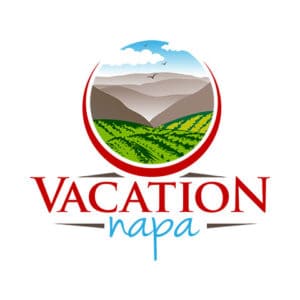
The area known today as Napa Valley, in Napa County, CA, has produced extraordinary wines for nearly 200 years. Despite this tradition of excellence, Napa Valley wasn’t widely recognized as one of the world’s great wine regions until relatively recently. If you’ve ever wondered which wines inspire travelers from across the globe to seek Napa, we’ve got the scoop below.
WHAT TYPE OF WINE IS NAPA KNOWN FOR? Cabernet Sauvignon and Chardonnay are the two most famous Napa wines. This reputation stems from the 1976 “Judgement of Paris,” where each variant won its respective category in a highly publicized blind tasting competition against the best wines of France. Given the history, it’s no surprise that today they are the two most fruitful grapes in Napa.
Napa as a whole may be known for Cabernet Sauvignon and Chardonnay, but that doesn’t give you the entire story. What you need to know is that Napa Valley’s unique geology features a series of minor variations in terrain, elevation, and climate. These variations combine to form 16 sub-regions called American Viticultural Areas, or AVAs.
Each AVA produces grapes with distinct characteristics, and they’ve each come to be known for different wines. Knowing which AVA you’re in makes a surprising difference. If you want to experience the finest of CabernetSauvignon and Chardonnay in Napa Valley, your best bet is to attend tastings the regions that specialize in both crops. We’ve got the breakdown for each below, as well as the scoop on Napa’s other signature bottles.
Cabernet Sauvignon
With a full body and a tendency toward pleasant black currant flavors, Cabernet Sauvignon has long held sway as the most popular red wine in the world. This leader of all Napa crops is the most common vines in 15 of the16 AVAs. With Los Carneros as the sole exception, we find Cabernet Sauvignon in:
- Coombsville
- Wild Horse Valley
- Mount Veeder
- Oak Knoll District of Napa Valley
- Yountville
- Stags Leap District
- Atlas Peak
- Oakville
- Rutherford
- St. Helena
- Spring Mountain District
- Chiles Valley District
- Howell Mountain
- Diamond Mountain District
- Calistoga
Chardonnay
The fifth-leading grape in the world, Chardonnay has a bit of a bad reputation in some wine circles. That’s both because of its relative ease to grow, and because the popularity and relatively neutral flavor lead toa high number of mediocre Chardonnays.
You can forget the reputation in Napa Valley, where pressings of this “Judgement of Paris” winner are considered to rival any of the world’s finest whites. Nine AVAs are known for their Chardonnays:
- Los Carneros
- Coombsville
- Wild Horse Valley
- Mount Veeder
- Oak Knoll
- District of Napa Valley
- Stags Leap District
- Atlas Peak
- Spring Mountain District
Merlot
Merlot is the #2 red in Napa. These beautiful, versatile blue grapes have a relatively high sugar content that leads to strong fruit notes like black raspberry, blackberry, plum, and black cherry. Though some California Merlots have a reputation for being overly sweet, the ones found in these Napa Valley AVAs are considered to be exquisitely balanced:
- Los Carneros
- Coombsville
- Mount Veeder
- Oak Knoll District of Napa Valley
- Yountville
- Stags Leap District
- Atlas Peak
- Oakville
- Rutherford
- St. Helena
- Spring Mountain District
- Chiles Valley District
- Howell Mountain
Pinot Noir
Pinot Noir
In the places where it does grow, it’s well worth the effort. The wine has flavors that are complex and range from fruity to earthy, with a medium body, low acidity, and a light red hue that is highly appealing.
- Los Carneros
- Coombsville
- Wild Horse Valley
Zinfandel
The claret-style Zinfandels found in Napa are often a pleasant surprise to tourists, who may be more familiar with the WhiteZinfandels that come from California’s other wine regions in jugs and boxes. Napa’s Zinfandels come in beautiful red and purple
- Mount Veeder
- Rutherford
- St. Helena
- Spring Mountain District
- Howell Mountain
- Calistoga
Sauvignon Blanc
Napa’s Sauvignon Blancs run from tropical fruit flavors to more subtle melon notes depending on the vintner. Look for a barrel-aged bottle labeled as Fumé Blanc for a style that’s truly a Napa Valley original. Sauvignon Blanc appears most commonly in these three AVAs:
- Oak Knoll District of Napa Valley
- Stags Leap District
- Oakville
Local Surprises
It’s important for novice wine lovers to understand that this isn’t your shopping list when visiting an AVA. You can confidently assume that each region’s most known wines will be at the top of their class, so the list is a great way to decide which AVA to go tasting in if you have a particular type of wine you’re excited to try.
That doesn’t mean that local entries from an AVAs less renowned types won’t be great wines. Remember that the valley’s greatest strengths are diversity and innovation. If you want to fully take advantage of those qualities, you have to be willing to try it all. The wine that looks unfamiliar might be the one that is unforgettable.
Related Questions
What is the best time to visit Napa?
To get the most out of your Napa Valley experience, were commend going between August and November. That timing puts you in Napa for the harvest season, when you can see ripe grapes on the vine, and you’ll have the chance to watch live pressings. If you really want to see how the wine gets made, this is definitely your best choice.
Can’t make it in the Fall? That’s fine, there’s no wrong time to visit Napa. With gorgeous weather all year long and countless activities, the very worst off-season travel scenario involves indoor wine-tasting on a rainy day or two.
If you don’t much care about seeing the grapes, you might consider going between October and May. The vines are empty, but so are the crowds, the wineries remain open for tours and tastings, prices on hotels tend to come down, and you’ll be able to see the region’s extraordinary mustard plants in bloom.
Why is Napa Valley famous for wine?
The simple answer is that Napa Valley produces some of the most excellent wine in the world. The local climate and soil quality foster healthy, delicious grapes, and the diversity of the AVAs allow for an uncommon variety of wines. With 200-hundred years to perfect their craft, the local vintners have achieved technical mastery on par with any growing region.
Due to the quality of the wine, it is easy to speculate that Napa Valley would eventually have reached its current acclaim without help. Help came anyway, in 1976, from a British wine merchant living in Paris namedSteven Spurrier.
Spurrier arranged a wine-tasting competition with the hopes of introducing the international wine community to the fantastic flavors coming out of America. During the event, which came to be known as “The Judgement of Paris,” Napa’s wines outperformed the best French vintages in a blind-tasting, establishing a reputation among the finest in the world and changing the wine industry forever.
At Vacation-Napa.com, we are passionate about promoting authentic experiences in Napa Valley. Our expert team of wine enthusiasts has curated a comprehensive guide to help you explore the renowned wines that have established Napa as a premier winemaking destination.

